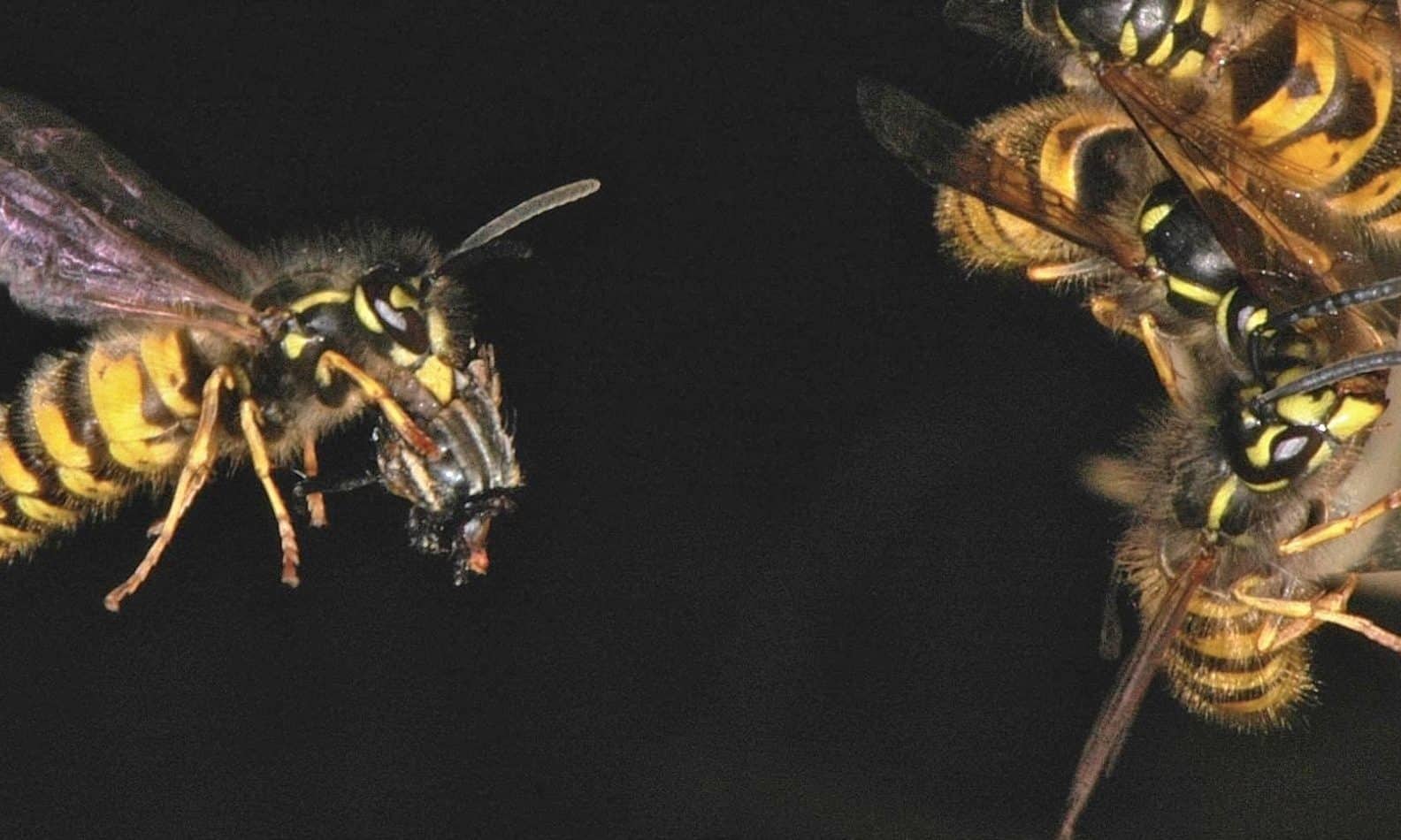An accidental introduction to Aotearoa New Zealand, the invasive common wasp (Vespula vulgaris) poses a threat to our native birds and insects. They not only compete with birds such as tūī for nectar, but are also very efficient predators, and will predate on native insect species.
Professor Phil Lester, from Te Herenga Waka/Victoria University of Wellington, and his team of researchers have recently published a report on the potential for a CRISPR gene drive to be used as a method of pest control for this invasive species.
The research looked into the genes involved in the production and development of sperm, and the potential for modifying these genes. Vespula wasps are haplodiploid, which means that males have one set of chromosomes while females have two. As such, queen wasps could be modified to carry the transformed genes which would be passed on to future generations without any effect on her.
If the queen mates with a genetically modified male, she would produce infertile eggs and the nest would die. However, the edited genes would spread through the population when the modified queen mates with a wild-type male, producing viable but genetically modified offspring that would be sterile.
While eradication would theoretically be possible, population suppression is more likely in many of their population models. Interestingly, this research suggested that a gene drive which caused complete male sterility would spread much slower than one that causes partial male sterility. This is thought to be a result of harsher gene drives spreading through the population more slowly.
“If you make something really deleterious, then it’ll knock out lots of individuals and travel through populations at a much slower rate.”
Other forms of pest control for wasps, such as the use of pesticides, are quite labour intensive and could cause harm to non-target species. A gene drive has potential to spread throughout the population with minimal effort required, and without the risk of impacting other species.
There is also potential for gene drives to be utilized for other pest populations, such as our introduced mammalian pests. However, focusing on wasps has an advantage as we know a lot about their genome – information which we don’t have for these mammal species.
“The critical issue is public acceptance of a genetically modified organism.” Phil says. “That’s part of the challenge too – to engage with as many people as possible to understand their perceptions of risks and benefits. This paper was a big part of that, trying to understand the risks really well, and trying to get to a point of designing something that could be specific.”
“In the end it’s got to be the New Zealand public’s perspective and approval to go with this sort of technology if it was to be used.”
Another aim of this research was to evaluate the potential risks of this pest control method, and how they could be mitigated. One common concern is that should a modified wasp return to their native home, the altered gene may spread and consequently damage the native populations.
Compared to the native populations of common wasps in Europe, the populations in Aotearoa have much less genetic diversity. A key goal in this paper was to target genotypes in New Zealand, but design gene targets which would leave genotypes in the wasps’ native range unaffected, should any modified wasps somehow return to Europe. The group were able to find and demonstrate that such genes for sperm production occur and could be targeted in New Zealand. The limited genetic variation in New Zealand provides a potential safeguard for European wasps.
A frequent question the team are asked is “What happens if a genetically modified wasp mates with a bee, or other wasp species?” This paper also showed that the genes involved for sperm production are highly specific to these wasps in particular, making this risk very minimal.
Phil also highlighted the need to consider that there are two species of invasive Vespula wasps in Aotearoa, the common wasp and the German wasp (Vespula germanica). If we were to target only the common wasps, as their populations declined the German wasps could potentially flourish. Therefore, targeting both species at the same time would be necessary.
An entomologist by trade, Phil is really grateful to the team he worked with and was hugely appreciative of the research team from AgResearch, the University of Otago, and Victoria University of Wellington. “I like the paper in terms of it being a combined approach – here’s some entomological expertise, here’s some genetic expertise, here’s some modelling expertise. It was a great group to work with.”
You can read Phil’s paper here.
